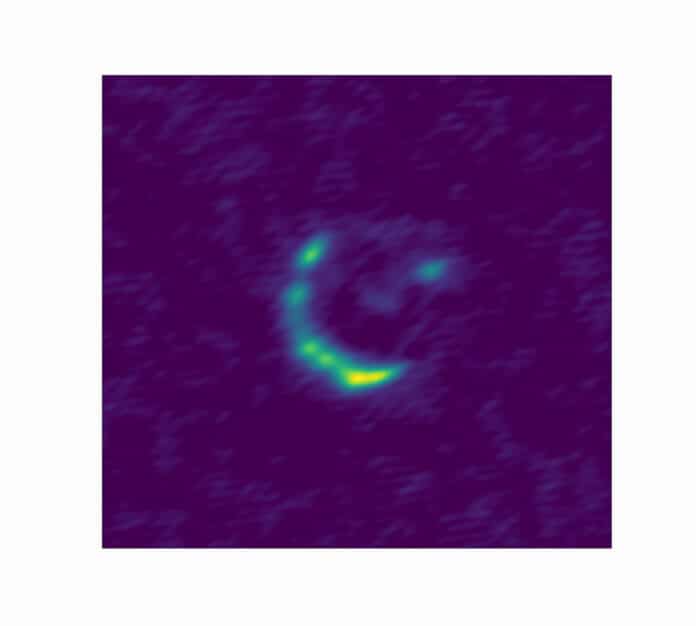Submillimeter galaxies (SMGs) are the main protagonists of star formation in early cosmic times. These objects are missed in optical/near-IR (NIR) surveys and have been found up to very high redshifts.
However, poor angular resolution and sensitivity have limited the studies conducted so far. This caused confusing problems and prohibited a detailed investigation of the physical properties of optical/NIR-dark galaxies and the conditions of their ISMs.
In the last few years, Atacama Large Millimeter/submillimeter Array (ALMA) deep-field observations have strongly improved the quality of observations of high-redshift dusty galaxies. In a new study, a team from SISSA presents high-resolution observations of the strongly lensed galaxy HATLASJ113526.2-01460 made by the Atacama Large Millimeter/submillimeter Array.
The galaxy is a highly remote celestial body in a still-young Universe. A thing that is so dark that, even to highly developed sensors, it is practically undetectable. Its nature has long been disputed, but via surveys, the SISSA research team, under Prof. Andrea Lapi, which studies the formation and evolution of galaxies, has now succeeded in defining its key characteristics.
The galaxy is compact and contains g large quantities of interstellar dust. It is a young galaxy: its star formation rate is about 1000 times the rate of the Milky Way.
The first author Marika Giulietti, who studies Astrophysics and Cosmology at SISSA, said, “This was a very special celestial body. It is very bright and potentially subject to lensing, but this occurs only at certain precise wavelengths, probably due to large quantities of interstellar dust. Studying it is consequently very complex. Observations made with ALMA, a modern sub-millimeter interferometer located in Chile’s Atacama desert, enabled us to determine its features.”
“We studied this peculiar object by adopting particular codes that enabled us to reconstruct the original shape of the background source and understand specific properties of the lens itself.
The observations also provided valuable information about the gas content of this source, and we were able to determine how it is distributed.”
“Our analysis showed that this object is very compact, presumably young, and forming stars at an extremely high rate. In the future, the James Webb Space Telescope will reveal much more about this galaxy, which only it can do now.”
Prof. Lapi, a co-author of the research, concludes by stressing the importance of this study said: “Distant galaxies that are young, compact, characterized by vigorous star formation, and largely obscured by dust, and that possess a very rich reservoir of molecular gas, are forerunners of the massive quiescent galaxies that we see in the local Universe, and therefore provide precious insights into the processes leading to the formation and evolution of these structures during the history of the Cosmos.”
“I would like to emphasize that the success of this research was achieved through synergy between the SISSA Astrophysics and
Cosmology group and the ALMA Regional Centre based at the INAF – Institute of Radio Astronomy in Bologna (in particular through collaboration with Dr. Marcella Massardi, co-author of the study), which allowed our students to access, and learn how to use effectively, the ALMA data archive, a real gold mine for astrophysics research today.”
Journal Reference:
- Marika Giulietti et al. ALMA Resolves the First Strongly Lensed Optical/Near-IR-dark Galaxy. The Astrophysical Journal (2023). DOI: 10.3847/1538-4357/aca53f
